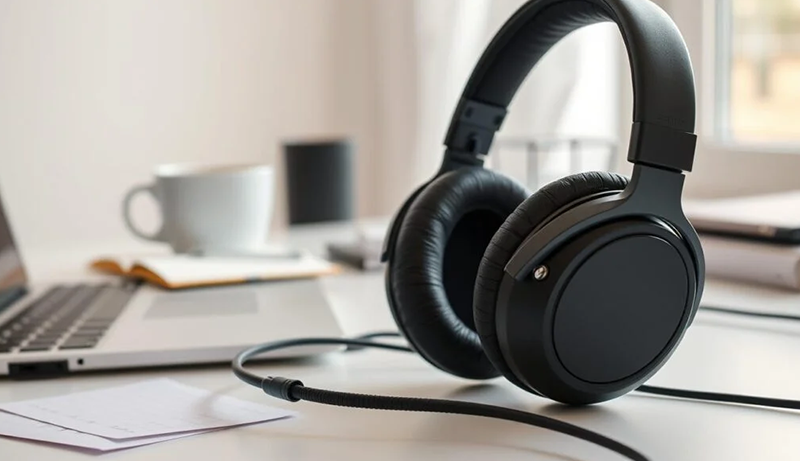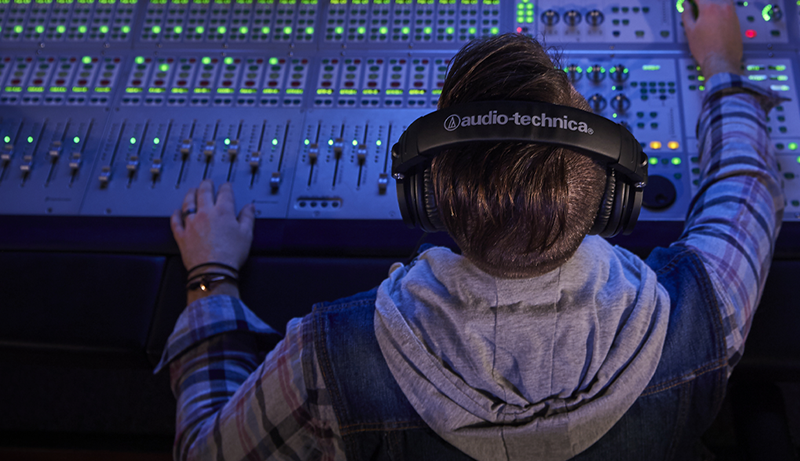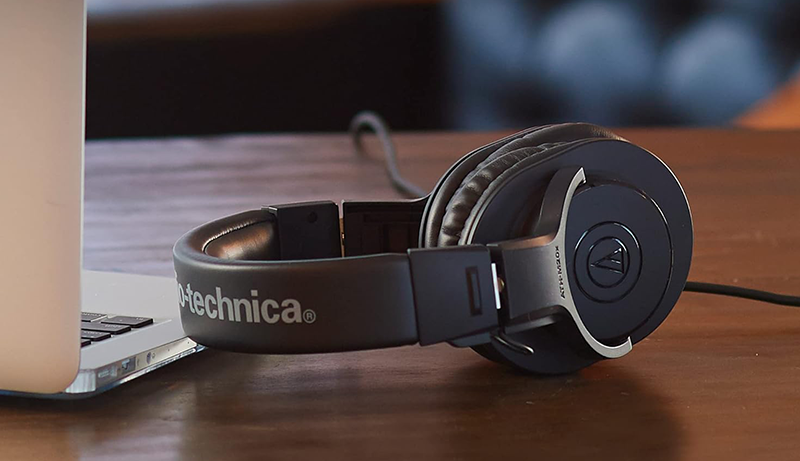When it comes to professional audio work, having high-quality headphones is essential—and transcription is no exception.
Clear audio is critical for accurate transcription, and the right pair of headphones can make all the difference. They help isolate speech, reduce background noise, and enhance vocal clarity so you don’t miss a single word. Whether you’re transcribing interviews, podcasts, or legal recordings, comfort and audio precision are key.
Below are some of the best headphones for transcription work, offering excellent vocal reproduction, noise isolation, and all-day wearability—helping you stay focused and efficient with every file you transcribe.
1. Sony MDR7506
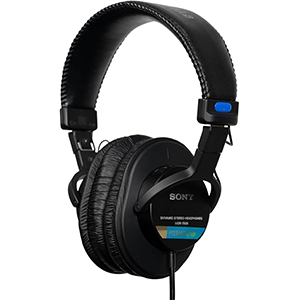
The Sony MDR7506 has been a staple in the audio world for over three decades—and for good reason. These headphones have earned a solid reputation for their reliable design and excellent sound quality. The design remains virtually unchanged since the late ‘80s and early ‘90s, even down to the retro-style packaging. While they may look dated, their performance is anything but.
The sound is where the MDR7506 truly shines. While the frequency response isn’t completely flat, with a slight roll-off in the lows and a boost in the high mids and low highs, this actually enhances vocal clarity—making them perfect for transcription work. Dialog comes through crisp and detailed, even during quiet whispers.
Powered by neodymium magnets, these headphones deliver smooth, consistent audio and help manage sudden volume spikes—great for avoiding ear fatigue during long transcription sessions. Comfort-wise, the padding and over-ear design make them easy to wear for extended periods. The build is also impressively durable; after seven years of use, the earcup lining still shows no wear. However, if you wear glasses, the fit might cause some pressure on the frames during longer sessions.
2. Audio-Technica ATH-M20x
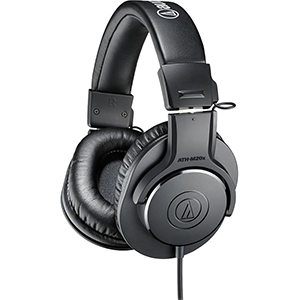
The Audio-Technica ATH-M20x is the budget-friendly sibling of the popular ATH-M50x—and it’s a solid performer in its own right. While it does come with some compromises, the M20x still offers impressive value, especially for transcription work.
One of the first differences you’ll notice is the build. The M20x is made of plastic and lacks the swiveling earcups found on the M50x, meaning it doesn’t fold for compact storage. However, the plastic feels sturdy and not cheap, which is a plus at this price point.
In terms of sound, while it doesn’t quite match the M50x, the M20x still delivers clean and balanced audio. The bass may be a little underwhelming, but the mids and highs are clear and detailed—perfect for picking up every word during transcription.
It also offers decent noise isolation, helping block out ambient sounds so you can focus on the task at hand. Comfort-wise, it’s fine for shorter sessions, but after a couple of hours, it can start to feel tight. Overall, the ATH-M20x is a strong budget choice for clear dialogue and light transcription use.
3. SENNHEISER HD 569
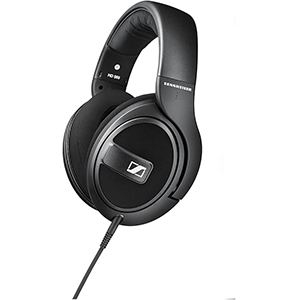
Sennheiser’s HD series is known for delivering top-tier audio quality, and the HD 569 stands out as one of the best options in the lineup—especially for those seeking high performance at an affordable price.
The HD 569 features the sleek, modern aesthetic typical of the series, offering a clean, professional look without going over the top. More importantly, these headphones are incredibly comfortable. You can wear them for hours without discomfort, making them ideal for long transcription sessions.
Sound-wise, the HD 569 offers a well-balanced profile. The bass is present but never overwhelming, while the mids are rich and full—perfect for capturing clear, detailed vocals. The highs add a touch of brilliance and presence to the audio, though some may find them slightly sharp depending on sensitivity.
The dynamic sound range makes it easy to distinguish between different voices, enhancing accuracy when transcribing multiple speakers. A thoughtful bonus is the inclusion of two detachable cables—a long 3m and a shorter 1.2m option—so you can choose the length that best suits your workspace and avoid clutter. Overall, the HD 569 delivers great value and clarity for transcription work.
4. AKG Pro Audio AKG K72
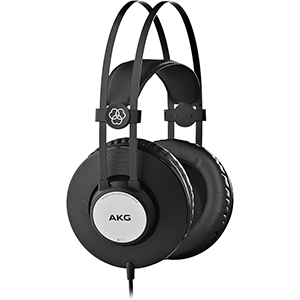
AKG is well-known for producing high-quality headphones, and the K72 brings that signature sound at a remarkably affordable price. While its design is minimal and unassuming, the performance it offers is surprisingly solid for the budget range.
The K72 is quite comfortable to wear. The large ear cups are well-padded and fit nicely over the ears, making it suitable for moderate work sessions. However, the headband feels somewhat flimsy and lacks the sturdiness found in higher-end models, though it does adjust easily and remains comfortable on the head.
Sound quality is where the K72 shines. It delivers crisp highs and good clarity, which is essential for transcription. The mids can be slightly muddy, but not enough to interfere with understanding speech—especially when the volume is properly set. The bright high-frequency response, typical of AKG headphones, works to your advantage here, making spoken words more intelligible and detailed.
One drawback is the noise isolation. The K72 lets in more ambient sound than other closed-back options, so it’s best used in a quiet environment. Still, for its price, the K72 is a fantastic choice for clear, effective transcription work.
5. TASCAM TH-02
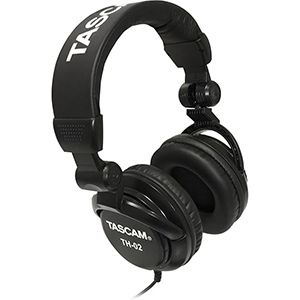
The Tascam TH-02 is a solid choice if you’re on a tight budget and need a no-frills solution for transcription work. While these headphones won’t wow you with premium design or audio fidelity, they do what they need to—and surprisingly well for the price.
At first glance, the all-plastic build feels cheap, but not overly fragile. The design is simple and functional, with no unnecessary extras. Comfort-wise, the TH-02 holds up thanks to thick padding on both the ear cups and headband. The ear cups can get a bit warm over time, but they remain comfortable during extended use.
In terms of sound, these aren’t ideal for music production, but for transcription, they actually perform better than expected. The exaggerated mids—where most vocals sit—help dialog stand out, making it easier to follow conversations and pick up subtle speech details.
However, the sound can be a bit muffled at lower volumes and tends to distort at higher levels. You’ll need to experiment a bit to find the volume sweet spot. Despite its limitations, the TH-02 is a surprisingly capable budget headphone for basic transcription needs.
Key Factors to Keep in Mind When Choosing Headphones for Transcription
Transcribing demands absolute accuracy, steady concentration, and gear that won’t exhaust your ears. The right headphones help you stay “in the zone,” meet deadlines faster, and deliver cleaner transcripts. Below are the main criteria worth weighing before you buy.
Frequency Response
Sound fidelity tops every other consideration. A neutral, relatively flat profile reproduces audio most faithfully, but a gentle lift in the mids (250 Hz–4 kHz) and upper highs can actually sharpen spoken words, letting voices cut through background hum. Conversely, an overly bass‑heavy model can mask dialogue, so look for cans that keep low‑end bloom in check.
Driver & Magnet Quality
Transducers—and especially their magnets—determine how smoothly headphones handle dynamic swings. Neodymium magnets are widely favored for their speed and consistency; they minimize harsh compression and tame sudden peaks such as mic bumps or recorder drops. Cheaper assemblies may magnify rumble, hiss, or room reverb, making already messy recordings harder to decipher.
Comfort for Long Sessions
Extended work means your headphones must feel effortless. Large ear cups with deep, breathable padding (velour or other soft fabrics) prevent hotspots better than vinyl. An adjustable headband is essential so the fit is snug without pinching. Lighter models reduce neck strain, yet don’t confuse featherweight with flimsy—balance comfort with durability. Bonus points if the ear pads are replaceable; it’s cheaper to swap cushions than the whole set.
Build Quality
A tough shell and reinforced cabling protect your investment, particularly if you commute or work in cafés. While drivers do need shielding, failures often start at the headband hinges or cable strain relief. Brands such as AKG and Sennheiser earn praise for rugged frames and reliable wiring that shrug off daily packing.
Brand Matters
Established pro‑audio makers have the scale to source reliable components and maintain quality control without inflating prices. Their models also retain resale value—handy if you later trade up. Names like Sony, Sennheiser, and AKG inspire buyer confidence and fetch better prices on the used market than generic alternatives.
Open‑Back vs. Closed‑Back
Open‑backs vent air for a wider, more natural soundstage but leak sound in both directions, making them less suitable in noisy rooms or public spaces. Closed‑backs isolate you from ambient clatter and protect confidential audio from prying ears, sacrificing only a little openness. For most transcriptionists—especially in courtrooms, offices, or airplanes—closed‑back designs are the safer bet.
Take Regular Breaks
Even with premium headphones, ears fatigue. Step away for five minutes every hour to let your hearing recalibrate and to avoid the “loudness creep” that tempts you to crank the volume. These pauses safeguard both your ears and your focus.
Final Thoughts
Crystal‑clear midrange, dependable build, and lasting comfort define great transcription headphones. Don’t assume each new model outshines the last; many veterans still swear by sets they purchased years ago. Choose a pair you can trust for the long haul, and any of the well‑regarded options on today’s market should keep your transcripts sharp and your sessions productive.

